Alexandria, Egypt’s second city, is a true waterfront city. When Alexander the Great wrested Egypt from the Persian empire in 332 BC at the age of 25, he decided against Memphis, the ancient capital, in favour of building a new city linked by sea to his Macedonian homeland. Choosing a site near the fishing village of Rhakotis, where two limestone spurs formed a natural harbour, he gave orders to his architect, Deinocrates, before travelling on to Siwa and thence to Asia, where he died eight years later. The city grew to become a major trade centre and a focal point of learning for the entire Mediterranean world. Its ancient library held 500,000 volumes and the long since gone Pharos lighthouse was one of the Seven Wonders of the Ancient World. The city declined into insignificance from the 4th century onwards and today shows little of its past glories.
– Lawrence Durrell, The Alexandria Quartet
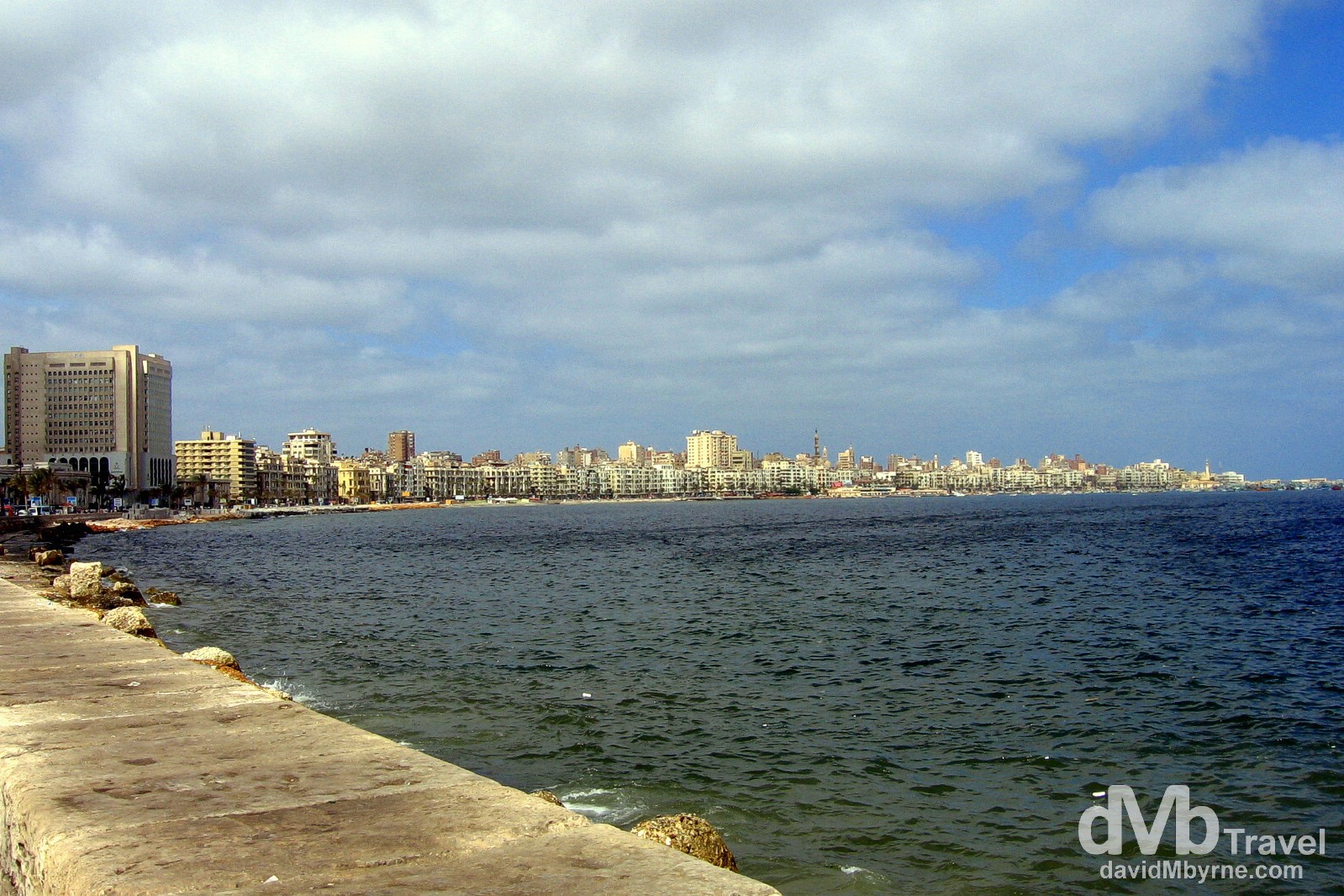
Alexandria, Egypt. April 16, 2008.

A section of the Corniche (26th of July), Alexandria, Egypt. April 16, 2008.
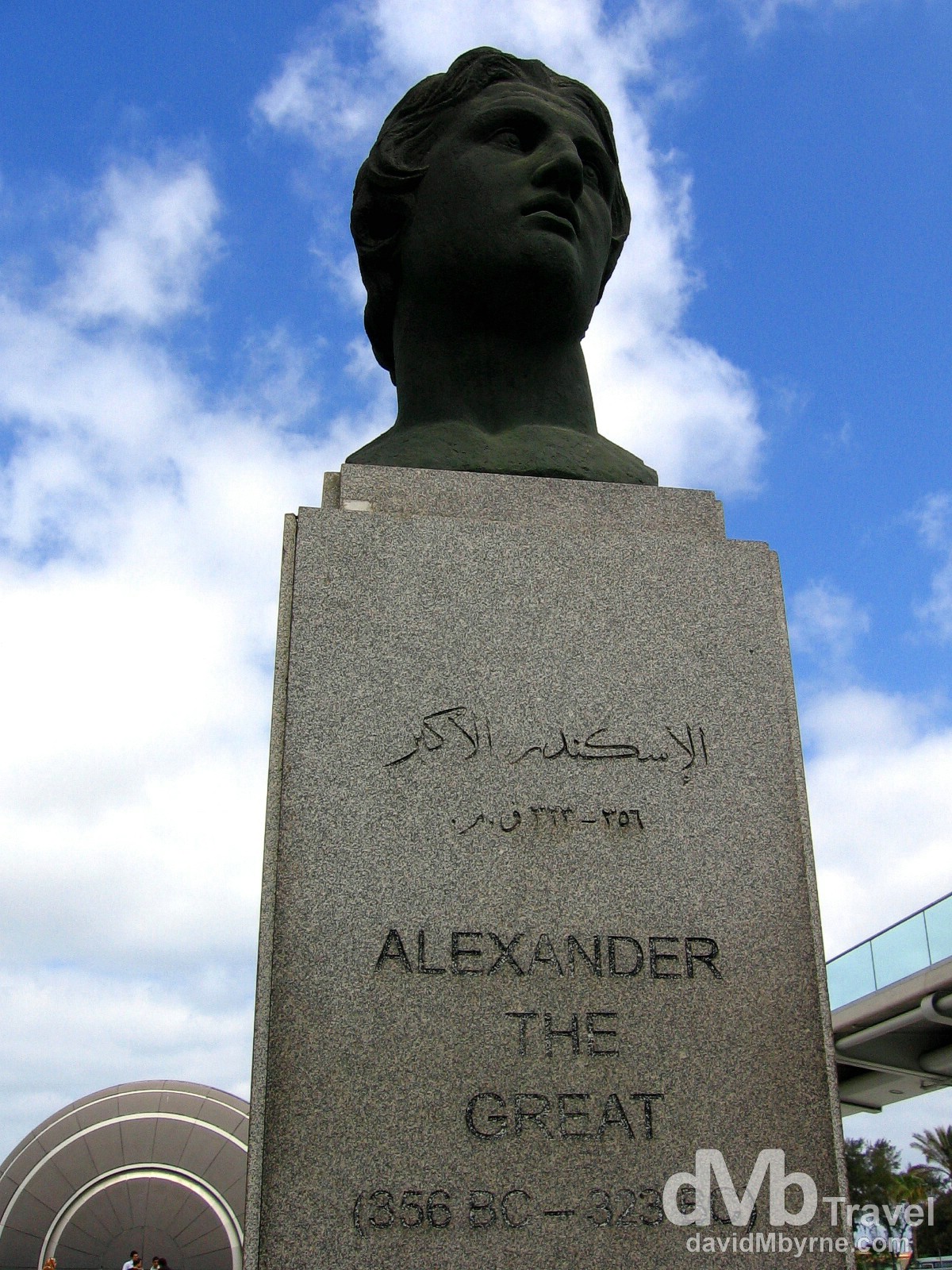
Alexander The Great, Bibliotheca Alexandrina, Alexandria, Egypt. April 16, 2008.
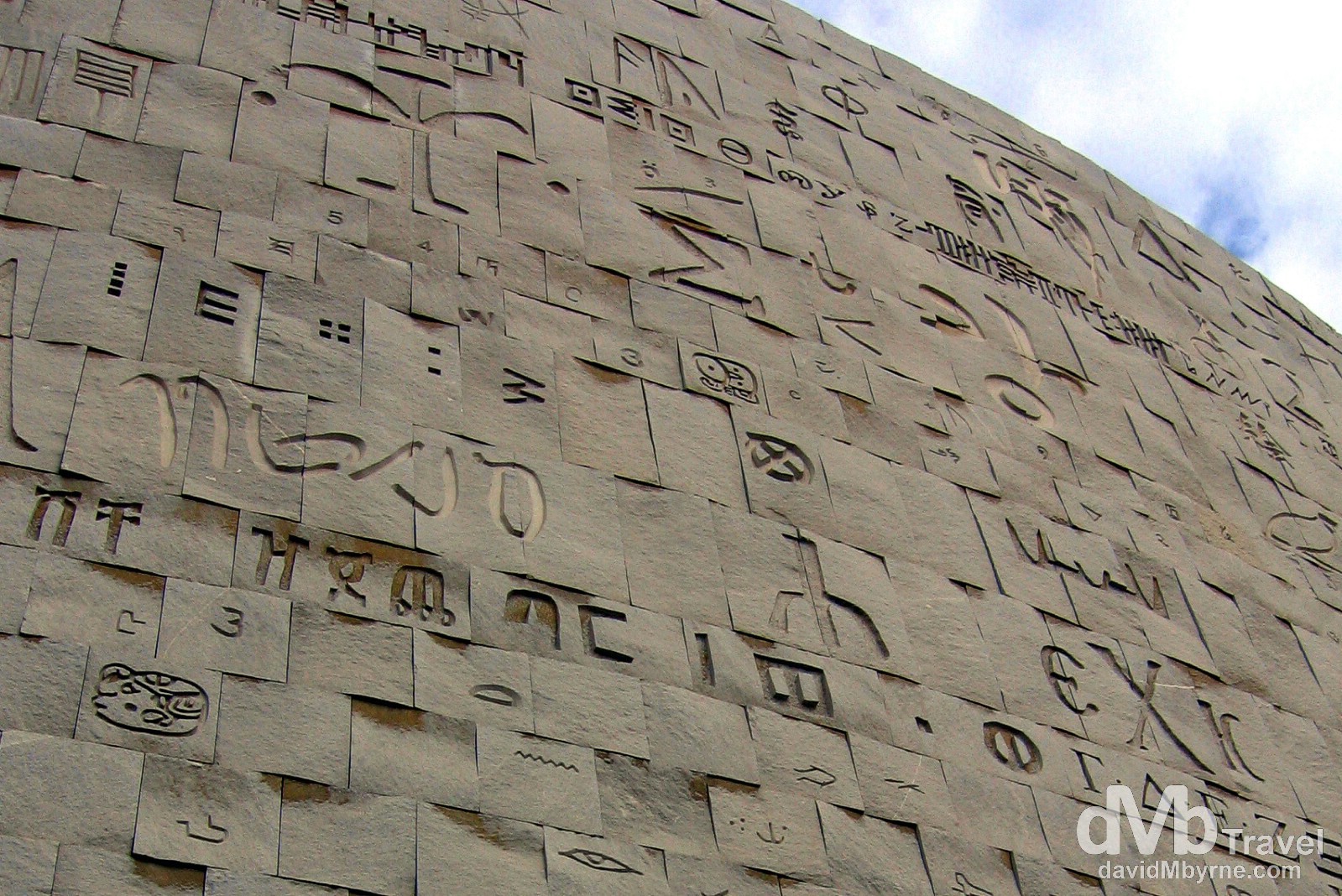
Giant letters, pictograms, hieroglyphs and symbols from every known alphabet on the outer walls of the Bibliotheca Alexandrina, Alexandria, Egypt. April 16, 2008.

A section of the Roman Amphitheater, the only one of its kind in Egypt. Alexandria, Egypt. April 16, 2008
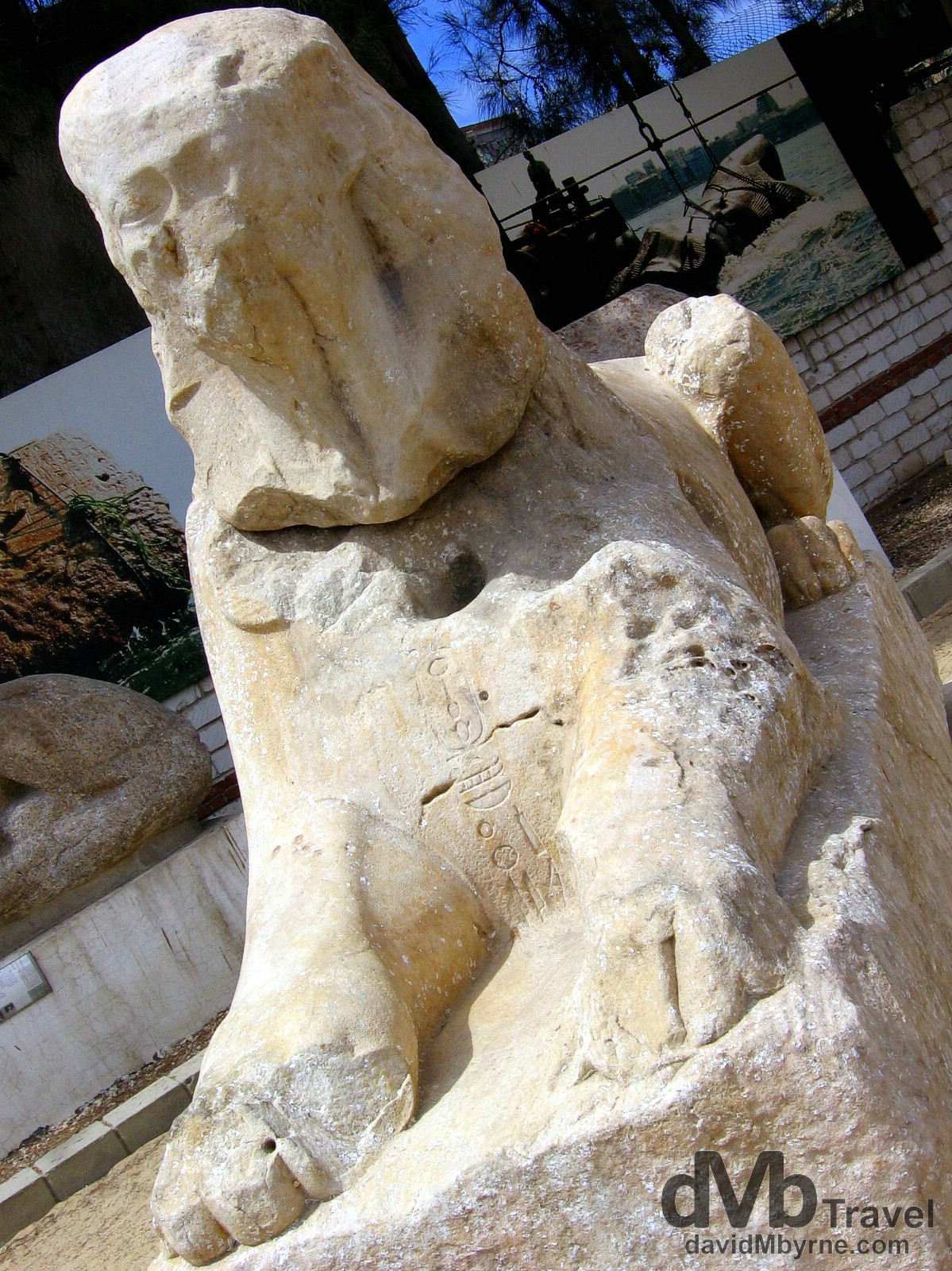
A water worn Sphinx on display in the grounds of the Roman Amphitheater in Alexandria, Egypt. April 16, 2008.
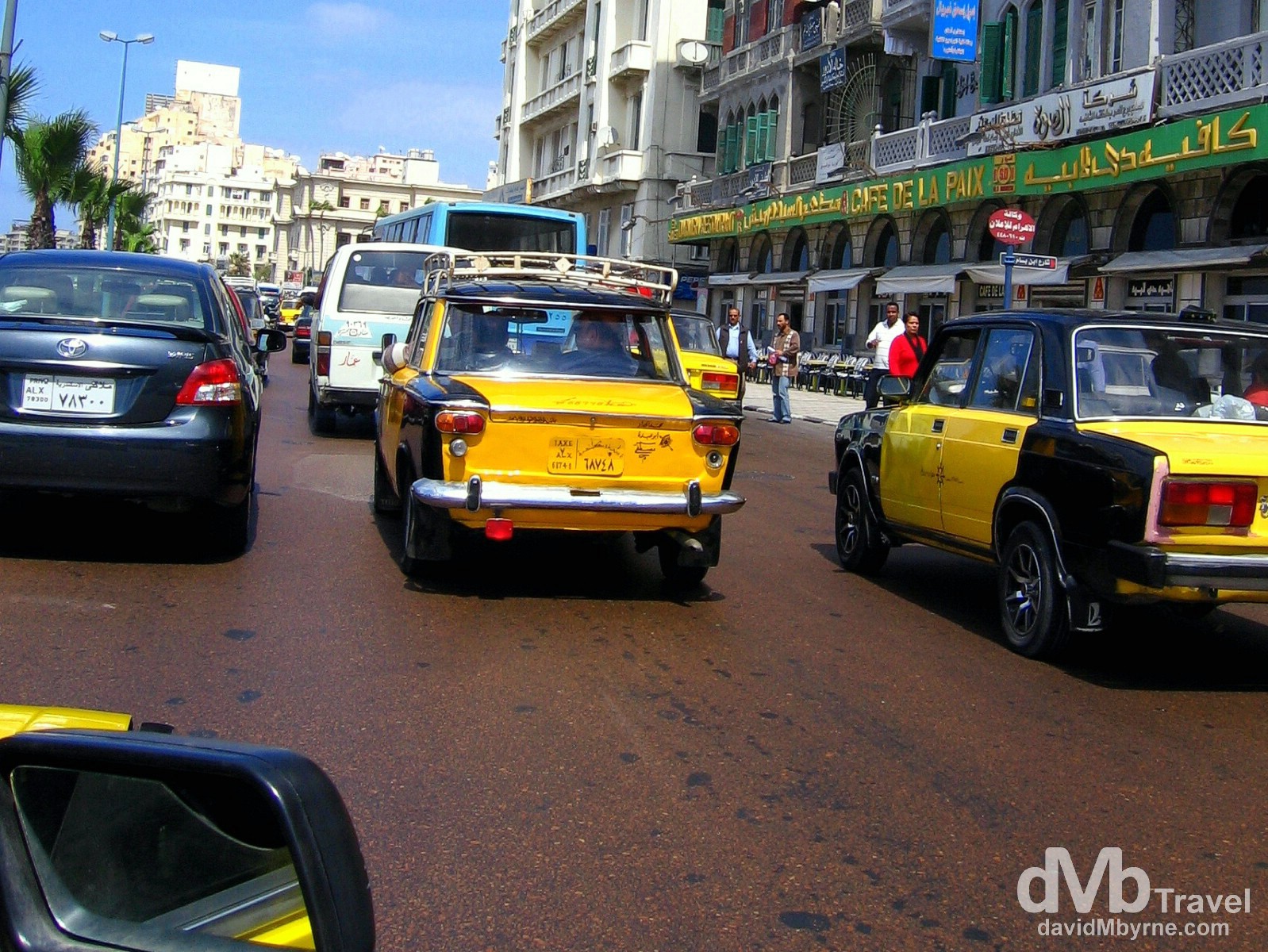
Traffic on the Corniche (26th of July), Alexandria, Egypt. April 16, 2008.
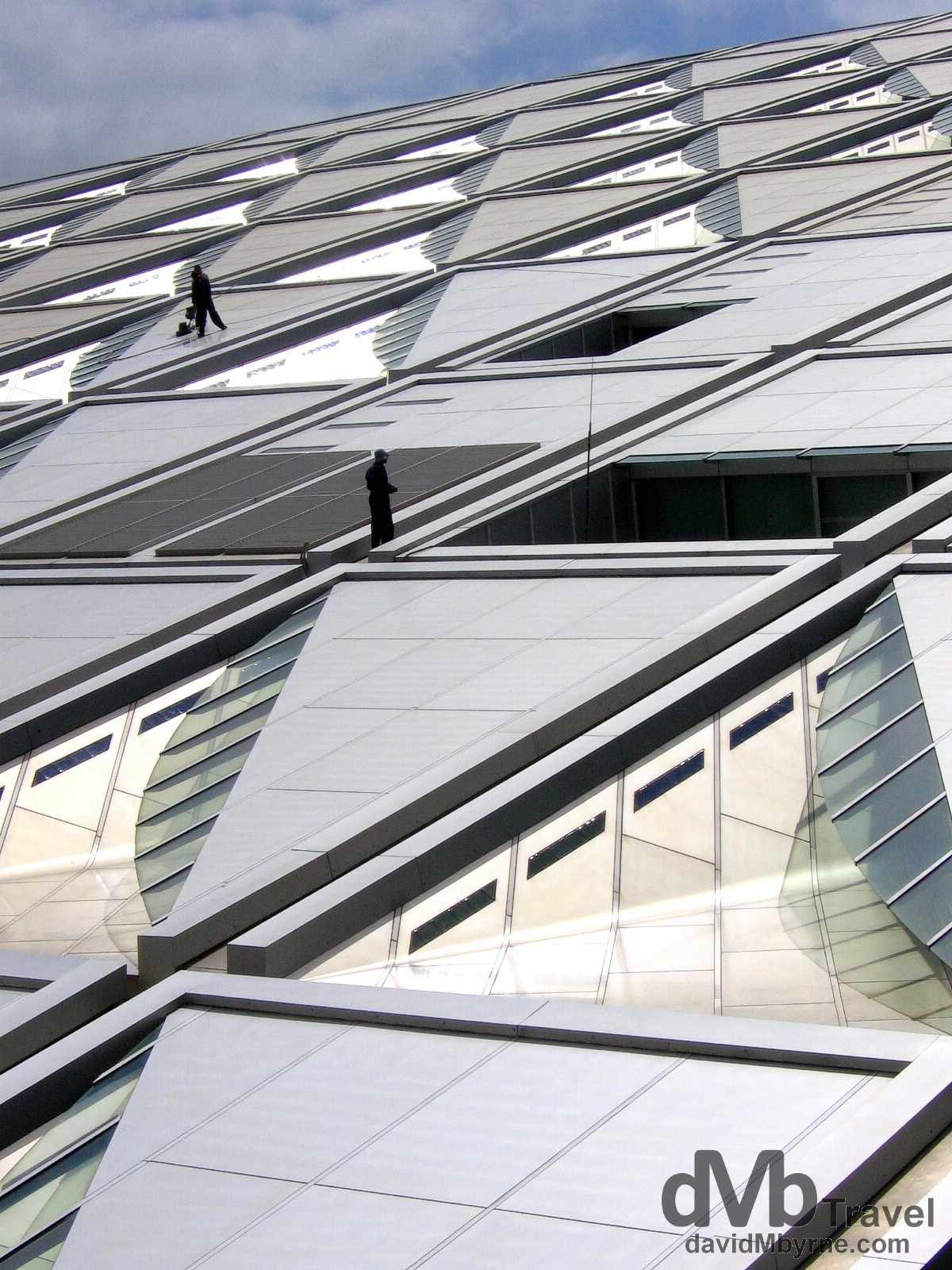
Workers on a section of the roof of the Bibliotheca Alexandrina, Alexandria, Egypt. April 16th 2008.
This architecturally splendid Bibliotheca Alexandrina is an attempt by the Egyptian city of Alexandria to put itself back on the world’s cultural map and to bring it bang into the twenty-first century. It was inspired by the original great Alexandria library which was founded in the 3rd century BC and was acclaimed as the foremost centre of learning in the ancient world. This modern-day equivalent is designed to hold 8 million books and the ancient wealth of learning is lyrically evoked on the curved exterior walls of the library, which are carved with giant letters, pictograms, hieroglyphs and symbols from every known alphabet.
______________________________________________________________________
